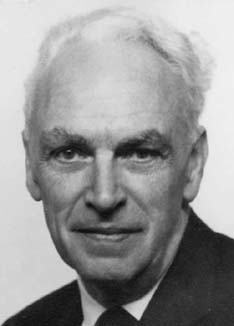<Back to Index>
- Mathematician Øystein Ore, 1899
PAGE SPONSOR

Øystein Ore (7 October 1899 in Oslo, Norway – 13 August 1968 in Oslo) was a Norwegian mathematician.
Ore was graduated from the University of Oslo in 1922, with a Cand. Scient. degree in mathematics. In 1924, the University of Oslo awarded him the Ph.D. for a thesis titled Zur Theorie der algebraischen Körper, supervised by Thoralf Skolem. Ore also studied at Göttingen University, where he learned Emmy Noether's new approach to abstract algebra. He was also a fellow at the Mittag - Leffler Institute in Sweden, and spent some time at the University of Paris. In 1925, he was appointed research assistant at the University of Oslo.
Yale University’s James Pierpont went to Europe in 1926 seeking to recruit European research mathematicians. In 1927 Ore was appointed Assistant Professor of Mathematics at Yale, becoming Associate Professor in 1928, and full Professor in 1929. In 1931 he became Sterling Professor at Yale, a position he held until his retirement in 1968.
Ore was an AMS Colloquium Lecturer in 1941 and plenary speaker at the International Congress in 1936 in Oslo. He was also elected to the American Academy of Arts and Sciences and the Oslo Academy of Science. He was also among the founders of the Econometric Society.
Ore visited Norway nearly every summer. During World War II, he was active in the movements "American Relief for Norway" and "Free Norway". In gratitude for the services rendered to his native country during the War, he was decorated in 1947 with the Knight Order of St. Olav.
In 1930, Ore married Gudrun Lundevall; they had two children. He had a
passion for painting and sculpture, collected ancient maps, and spoke
several languages.
Ore is known for his work in ring theory, Galois connections, and most of all, graph theory. His early work was on algebraic number fields, how to decompose the ideal generated by a prime number into prime ideals. He then worked on non-commutative rings, proving his celebrated theorem on embedding a domain into a division ring. He then examined polynomial rings over skew fields, and attempted to extend his work on factorization to non-commutative rings.
In 1930 the Collected Works of Richard Dedekind were published in three volumes, jointly edited by Ore and Emmy Noether. He then turned his attention to lattice theory becoming, together with Garrett Birkhoff, one of the two founders of American expertise in the subject. Ore's early work on lattice theory led him to the study of equivalence and closure relations, Galois connections, and finally to graph theory, which occupied him to the end of his life.
Ore had a lively interest in the history of mathematics, and was an unusually able author of books for laypeople, such as his biographies of Cardano and Niels Henrik Abel.